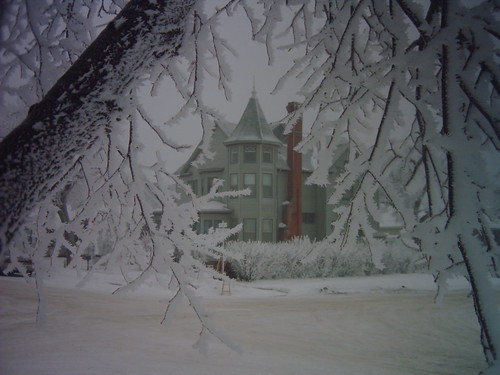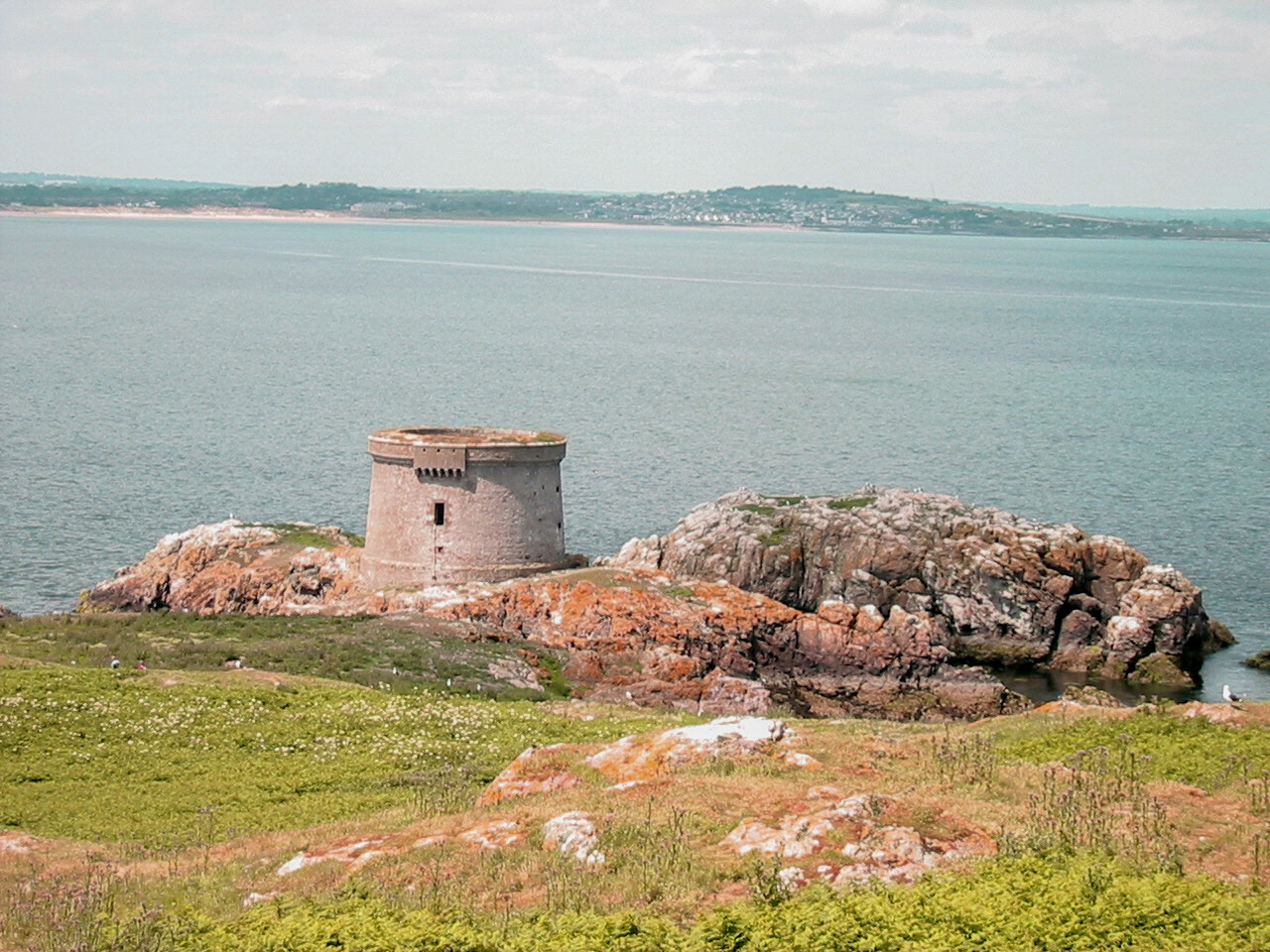Blue Highways: Langdon, North Dakota
Unfolding the Map
 Hey Littourati! What is burrowed in the ground, usually has two brains, four eyes, four arms, four legs, is totally computerized, and when it moves will probably kill millions? Give up? A nuclear missile in a silo, of course! William Least Heast-Moon (LHM) gets into a discussion about nukes with a resident of Langdon, North Dakota. Let's think about that for a post. If you want to target Langdon, triangulate your coordinates at the map.
Hey Littourati! What is burrowed in the ground, usually has two brains, four eyes, four arms, four legs, is totally computerized, and when it moves will probably kill millions? Give up? A nuclear missile in a silo, of course! William Least Heast-Moon (LHM) gets into a discussion about nukes with a resident of Langdon, North Dakota. Let's think about that for a post. If you want to target Langdon, triangulate your coordinates at the map.
Book Quote
"After breakfast in the city park at Langdon, a Nordic town of swept streets and tidy pastel houses with pastel shutters at the picture windows, a town with the crack of Little League bats in the clear Saturday air, a town of blond babies and mothers wearing one hundred percent acrylics and of husbands washing pastel cars to kill time before the major league Game of the Week, this happened:
"In the park, a man walking with a child saw me staring at a 'retired' Spartan missile that now apparently served the same function as courthouse lawn fieldpieces with little pyramids of cannonballs once did....
"'She's a nuke,' the father said with proprietary pride....
"'Make you feel good, don't they? Proud and taken care of, like.'"
Blue Highways: Part 7, Chapter 8
 Bed and Breakfast at Tiffany's in the frost at Langdon, North Dakota. Photo by "bedandbreakfastattiffanys" and housed at Flickr. Click on photo to go to host site.Langdon, North Dakota
Bed and Breakfast at Tiffany's in the frost at Langdon, North Dakota. Photo by "bedandbreakfastattiffanys" and housed at Flickr. Click on photo to go to host site.Langdon, North Dakota
Once again, which has really been a rarity on this trip through LHM's book, I can say that I've been to the area of the country through which he is traveling. You might wonder why I have visited this region of North Dakota. It was because of a job that I had that required me to drive to Dunseith, North Dakota and check up on some people that I had placed in a volunteer position there in the early 90s. I can't remember for sure, but I most likely went through Langdon to get to Dunseith. My girlfriend, now my wife, went with me. I certainly remember, on my return trip, traveling along North Dakota 5 until it met Interstate 29, and passing by nuclear missile silos.
Of course, they weren't marked as silos. It supposedly wouldn't do us well if everyone knows where they are. However, they are probably the worst-kept secret in the world. As we passed by, we realized that they were obviously some kind of installation that was not related to energy-distribution or water-distribution. Locals know where they are, and even our enemies at the time, the Soviets, knew where they were from satellite flyovers. When we passed them, all we saw was a chain link fence surrounding a concrete pad with a kind of cap on top of it, and maybe a small utility structure. There might have been an antenna of some sort as well. Usually, a sign or multiple signs warned against entering and that the "use of deadly force is authorized."
On the nuclear missile, nuclear silo issue, I have been related with people who manned the silos, and who tried to get rid of them. In the mid-1980s, I did volunteer work in Milwaukee, and came to know a group of local activists connected with the Plowshares Movement. Plowshares took its mission from the biblical injunction:
"And he shall judge among the nations, and shall rebuke many people: and they shall beat their swords into ploughshares, and their spears into pruning hooks: nation shall not lift up sword against nation, neither shall they learn war any more."
King James Bible Online (1769 version)
Isaiah 2:4
The goal of the Plowshares Movement, then, is to call attention to these weapons of mass destruction and eventually get them eliminated. Toward that end a number of people began civil disobedience actions where they trespassed onto nuclear silos, usually by cutting through the fencing or locks, symbolically damaged the top of the silo by cutting wires or splashing red paint or even their own blood on the concrete lid of the silo, and then waited for the military to show up and arrest them. Often the activists would get a minimum of six months in federal prison for their action. In Milwaukee, I was friends with a guy who was close to our volunteer community. After I left Milwaukee, he participated in a Plowshares action and received at least a year in prison. The last I heard, he is out of prison and affiliated with the Omaha Catholic Worker, where he works on day-to-day issues of the poor and to bring attention to larger world issues such as nuclear weapons.
On the below-ground side, I remember reading how the silo actually works. There are two military personnel stationed below ground at the silo at all times. If it is still like I read, these members of the military, when they receive a transmitted code, must look up the code for the launch sequence and then each must insert a key and turn it at the same time to activate a launch countdown. Should one of them balk, I had thought that the other has license to kill in order to make sure that the launch goes through, though the concept of the two keys is considered a safeguard against accidental launch and would not really lend itself to one killing the other. This came home to me when I met Bob. He had manned a silo while in the Air Force. He was a nice, quiet guy from South Carolina who did on-call work for the university medical school where I have my daily employment. Retired, he was soft spoken and I had trouble reconciling him with a person who literally had the fate of millions at his fingertips.
I also had that trouble when I met another man named Bob who worked had worked at one of the national labs in New Mexico. Bob is another quiet, gentle unassuming man who was passionate about his Catholicism and passionate about peace and justice. In his 80s, he put together a proposal and saw it through so that now a pilot project is testing how villages in Africa can grow food with better irrigation. After a few times of speaking with Bob, he told his story. His initial job at the labs was coming up with a better system to defend Europe in case of a Soviet invasion across the border. All the models said that a full scale invasion could not be countered by NATO without the use of nuclear weapons, so Bob and the rest of the people on his team came up with the fastest and most effective way to put these nuclear warheads into play. At some point, the labs spun off his business about the same time that he realized that what he was doing was incompatible with his faith, and so he sold out that side of the business to partners.
My father was a person who felt that nuclear weapons saved his life by forestalling an invasion of Japan, and thogh my father-in-law is more circumspect in saying it, he also argued that millions of lives would have been lost in such a campaign. For years we lived under the protection of a nuclear umbrella. So I understand how people might see nuclear weapons as safeguarding their way of life, like the man quoted by LHM.
But when I visited the Trinity Site in New Mexico, where the first atomic bomb was exploded, I saw a sight that signaled the diversity of the U.S. feelings about nuclear weapons, and perhaps the hypocrisy as well. The site, located in the middle of the White Sands Missile Range and open only twice a year to the public, was off-limits to any kinds of demonstration. But here and there in the midst of the space, encircled by a chain link fence, where a stone obelisk marked the fateful detonation, small groups prayed silently together. Some were pacifists praying for world peace and an end to the nuclear insanity. Others were evangelical Christians, praying for America and the greatness that conquering the atom stood for. Some might have been praying for Armageddon, in keeping with their faith that the last battle will herald the Kingdom of God. Others, blissfully ignorant of these groupings, posed for pictures next to the obelisk and looked for trinitite, slightly radioactive glass fused from the sand when the plasma of the blast seared the desert.
That blast, which raised a terrible, yet beautiful, flower from the desert floor, caused even its architect, J. Robert Oppenheimer to tremble a little before its might and wonder what type of horrible genie was released from its bottle. "I am become Death, the destroyer of worlds," he said, quoting from the Bhagavad Gita. In our silos in North Dakota and other states, on submarines cruising the oceans, and in Russia, China and other places, many destroyers of worlds still sit waiting for a time when they might be called to wreak their horrible vegeance.
Musical Interlude
Another double-shot, Littourati! About the time that LHM was pondering nuclear missiles in North Dakota, Iron Maiden was writing 2 Minutes to Midnight, referencing the Doomsday Clock and the launch of nuclear missiles. Around this time also, Nena was penning 99 Luftballons, about an accidental nuclear launch because, of all things, red balloons. It's the height of anger, fear and hysteria in Cold War era music, and two very different styles!
If you want to know more about Langdon
City of Langdon
Facebook: Cavalier County Republican (newspaper)
North Dakota State University Langdon Research Extension Center
Wikipedia: Langdon
Next up: Backoo, North Dakota




 Tuesday, January 24, 2012 at 1:47PM
Tuesday, January 24, 2012 at 1:47PM

